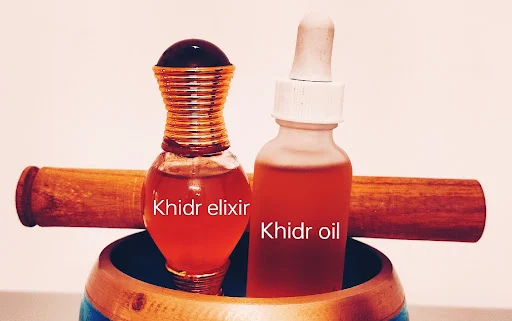Memory is the process of perception, storage and recall by which the nervous system retains past experience and uses it to generate or modify future behavior. Dementia is a permanent decline in cognitive functions and memory from a previous level.
Alzheimer’s disease is a slowly progressive disease of the brain that is characterized by dementia and eventfully by disturbance in reasoning, language, planning and perception. Other symptoms associated with these groups include problems with judgment, changes in personality, mood and behavior; anxiety, depression disorientation to time and place; and wandering etc.
Alzheimer’s disease is the most common form of dementia and occurs world wide now. It is rare in people younger than 40 years of age, but its prevalence grows rapidly between the age of 65 and 85. The other common causes of dementia are advancing age, brain injury, alcoholism, drug toxicity, cerebral arteriosclerosis, hypertension, hypothyroidism, multiple sclerosis, pick’s disease, various infective encephalitis, HIV infection, compression from hydrocephalus and brain tumors.
Alzheimer's disease is due to accumulation of a waste protein (beta-amyloid protein) in the brain. Common features are memory loss, difficulty performing familiar tasks , problems with language, disorientation to time and place, poor or decreased judgment, problems with abstract thinking, misplacing things, changes in mood or behavior, changes in personality, loss of initiative etc.
Normal individuals at 50 years of age will recall only about 60%. Alzheimer is seen more in females due to choline deficiency, low consumption of eggs. The cholinesterase inhibitors (phosphoric acid, Hydrocotyle) can block the excessive breakdown of acetylcholine.
Reduce common salt, alcohol, caffeine, tobacco, sugar, and foods that are processed, or filled with chemicals and artificial color dyes. Avoid the use of one food item more than 4 days per week. Thus we can eliminate the food allergens to which we are generally addicted. Avoid food with bitter taste and exposure to extreme cold Use non caffeinated herbal teas. Prefer items promoting perspiration.
Instill mustard oil drops into the nostril. Inhale powder of mustard or piper longum.
TREATMENT
Prophylaxis
Avoid high animal fat, high sucrose consumption, drinking hard water, stomach surgery.
Avoid exposure to insecticides and heavy metals (Aluminum, Lead, Antimny, Cadmium, Manganese and mercury) as much as possible.
Homoeopathic tinctures-A
| Physostigma venenosum 3C | Hydrocotlye 3C | Aconitum 3C |
Curcuma longa 3C | Berberis vulgaris 3C | Sanguinaria 3C |
Fucus vesiculosus 3C | Salvia officianilis 3C | Medicago sativa 3C |
Damiana 3C | Ginkgo biloba 3C | Ginseng 3C |
Phyllanthus officinalis 3C | Piper nigrium 3C | Black nightshade 3C |
Podophyllum 3C | Trigonella 3C | Zingiber officinalis 3C |
China 3C | Glycyrrhisa glabra 3C | Sulphuric acid 3C |
Above tinctures in sufficient quantities are helpful to arrest and cure the premature neuro-degeneration .
Homoeopathic tinctures-B
Acorus calamus, Brahmi, Cinnamon, Evolvulus alsinoides, Ginkgo biloba, Ginseng, Glycyrrhiza, Hypericum perfoliatum, Hydrocotle asiatica, Thuja orientalis, Valeriana, Withania somnifera, Zingiber officinale, and Phosphoric acid
Homoeopathic triturations
Selenium 3X (Mercury-antidote)and Alumina silicata (12X) have a major role in this treatment.
*
Traumatic dementia
It usually results from multiple head trauma in childhood, road accidents, and sports.
Common changes occur in nervous system
Reduction in weight of brain.Narrowness of convolutions.
Reduction in numbers of neurons.
Formation of plaques outside the neurons.
Twisted fibrils inside the neurons.
Increase in neuroglia.
Changes in lipid/protein ratio.
Decrease in colloidity.
Increase in condensation.
Increase in coagulation.
Prognosis
Good.
Prime medicine
Arnica 2x, Yohimbinum 2x (Post traumatic stress, Remote memory).
Good.
Prime medicine
Arnica 2x, Yohimbinum 2x (Post traumatic stress, Remote memory).
Medicines
Homeopathic medicines are helpful to correct the dementia, cognitive dysfunctions and the various degenerative changes occurred in nervous system.
Children | ||
Middle age | Old age | |
Susceptible to treatment | Susceptible | Partly susceptible |
Cold items | Cold | Warm items |
Bitter and Astringent | Bitter and Astringent | Pungent |
Glycyrrhiza 3C. | Alcoholic dilution. | Honey, brandy |
Brahmi 3C, Hydrocotyle 3C. | Arsenic album 3 C | Cannabis Indica 3C. |
Acorus calamus 3C. | Nux vomica 2C, Thuja 2C. | Achyranthes aspera 2C. |
Belladonna 3C, Stramonium 3C, Hyoscyamus 3C. | Withania somnifera 2C. | Physostigma 2C, Trigonella 2C. |
Tabacum 3C, Ephedra 3C. | Viscum album 2C. | ***Allium sativa 2C. |
Secale cor 3C. | Secale cor 3C. | Secale cor 3C. |
Ginkgo biloba 3C. | Ginkgo biloba Q Ginseng Q | Ginkgo biloba 2C. |
Cow ghee. | Cow ghee* | Buffalo ghee. |
Source of arsenicum Sinapis alba, Sinapis nigra, Tabacum, Taraxacum, Rice milk, Chicken, Smoke of human hair (infrequently) . | ||
Head injury, and space occupying lesion Arnica hair oil, Podophyllum 2C, Rauwolfia 2C (Indian snake root). | ||
Bleeding diathesis Sulphuric acid, Salix nigra, China, Aloes socotrina. | ||
Nutritional items Alfalfa malt, Egg yolk (choline), Cheese, Banana, Walnut, Pineapple, Animal soup, Protein powder. Metal (Yang) items Aurum cyanide, Alfalfa, Grape. Supporting measures Massage at tip of both thumb and great toes | ||




No comments:
Post a Comment